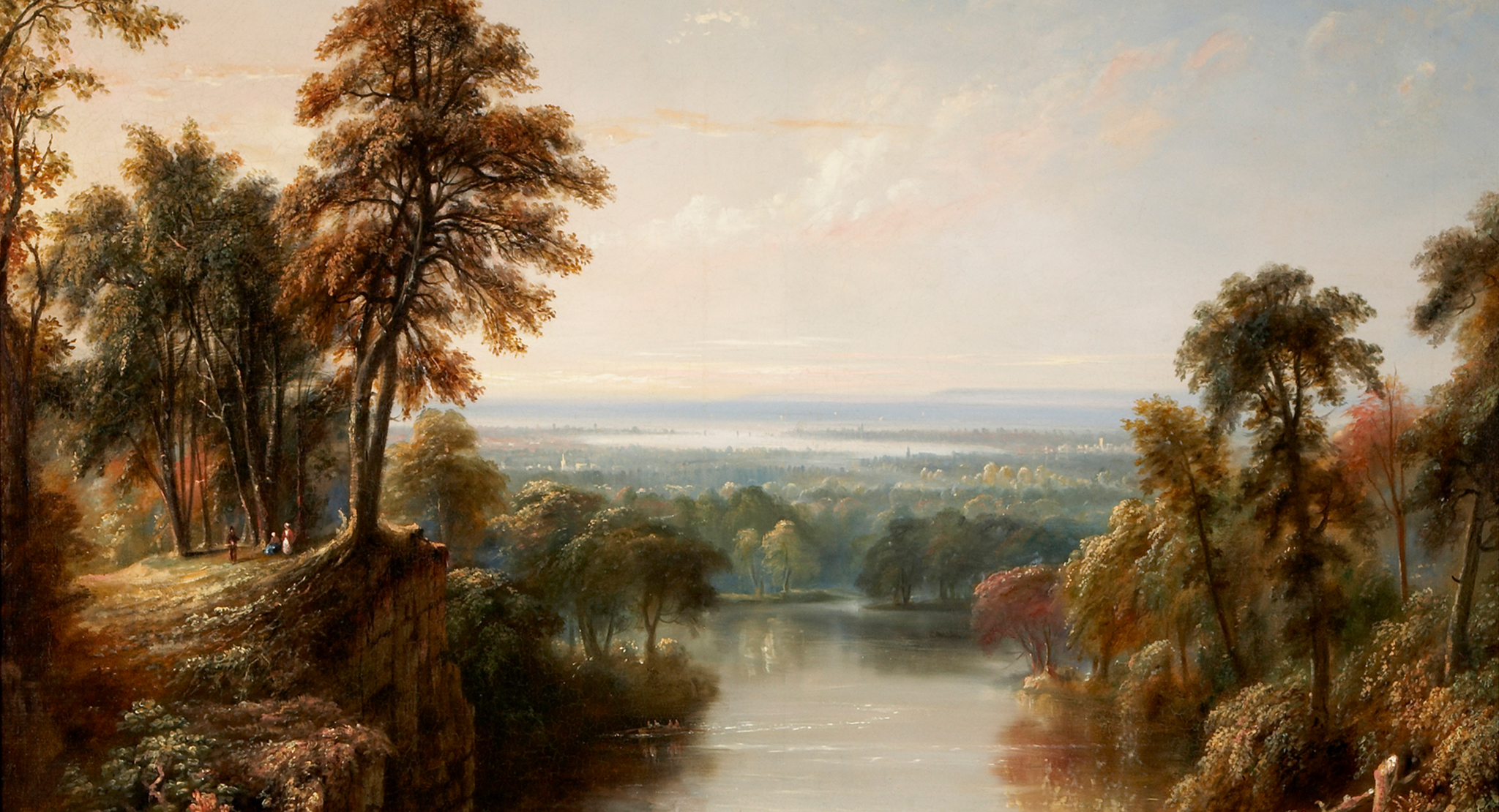Lauren Broughton is a senior at Waterdown District High School, and is our co-op placement student in the AGH Marketing department. For this special AGH Magazine article, we asked Lauren to select a piece from The Collection to feature in her very own Collection Showcase.
After spending a morning exploring the Gallery Level 2 exhibition, Lauren selected Robert Whale’s View of Hamilton for her article.
Robert Reginald Whale (1805-1887) was one of the first professional artists working in present-day Ontario. He is best known for his landscape paintings of Hamilton, Dundas, and Niagara, as well as portraiture art. Whale used a romantic style to depict Canada’s beautiful landscapes. At age 10, Whale taught himself how to paint. He was strongly influenced by artists such as Sir Joshua Reynolds.
In 1852, Whale and his wife Ellen Heard moved their 6 children from England to Canada. He first settled in the village of Burford in 1852, then later moved to the town of Brantford in 1864. Here, Whale established a family studio where he employed his sons John Claude Whale and Robert Heard Whale, as well as his nephew John Hicks Whale. Whale, his sons, and his nephew entered many of their paintings in provincial contests, where they received many awards. In 1862, several of his landscape paintings were put on display at the international exhibition in London. His paintings were also included in the Ontario Provincial exhibition in Hamilton, 1868. Whale and his sons also traveled around western Ontario painting portraits and landscapes. Whale’s most notable portrait sitters were Sir Allen Napier MacNab – a Hamilton politician and industrialist, Hiram Capron – the founder of Paris, Ontario, and W.H. Merritt – builder of the Welland Canal. In 1880, Whale took a trip to New Hampshire to paint the White Mountains. After the death of his wife in 1871, Whale accompanied his son on a trip to England where he stayed for four years, then returning to Canada where he continued to work until his death in 1887.

View of Hamilton depicts an idyllic view of Hamilton. It is painted in a way to make you feel as though it could be the English countryside rather than an emerging city. I chose this piece because of how soft and elegant it looked, as well as how it reminded me of the romanticism art movement that I learned about in my art class. The style is similar to paintings such as Liberty Leading the People, Eugene Delacroix and The Soul of the Rose, John William Waterhouse. I also chose this painting because I live in Hamilton and it is interesting to see what Hamilton looked like in the 1800s.
“Robert Whale Family fonds,” National Gallery of Canada, https://www.gallery.ca/library/ngc034.html (accessed November 15, 2019)
Robert Stacey, “Robert Reginald Whale,” The Canadian Encyclopedia, https://www.thecanadianencyclopedia.ca/en/article/robert-reginald-whale (accessed November 15, 2019)
Regina Haggo, “Robert Reginald Whale painted an idyllic past.,” The Hamilton Spectator, https://www.thespec.com/whatson-story/7476551-regina-haggo-robert-reginald-whale-painted-an-idyllic-past/ (accessed November 15, 2019)
“Roots: Canadian and Russian Landscape Painting (1860 – 1940),” Virtual Museum, http://www.museevirtuel.ca/edu/ViewLoitDa.do;jsessionid=E28CED37C9EEF14A2B81515BE411429A?method=preview&lang=EN&id=13278 (accessed November 15, 2019)


